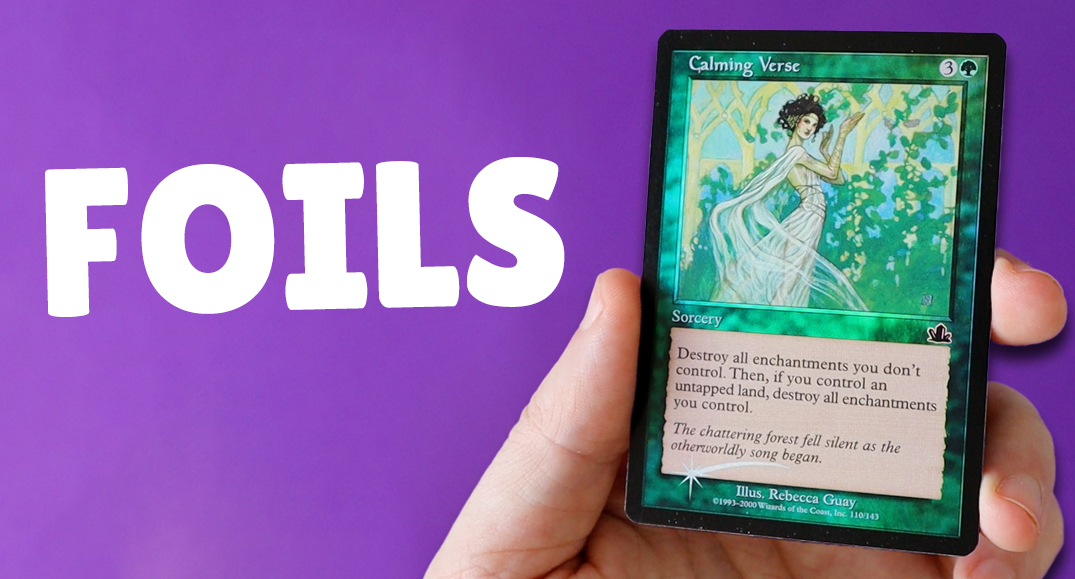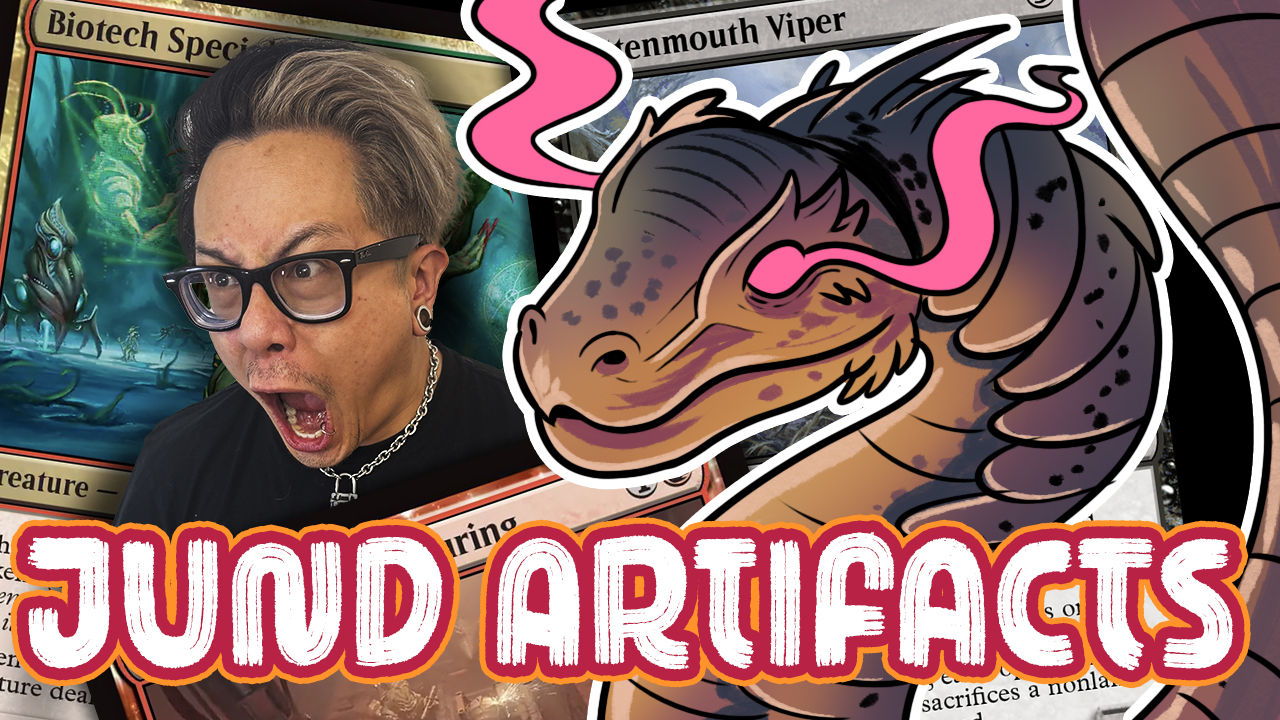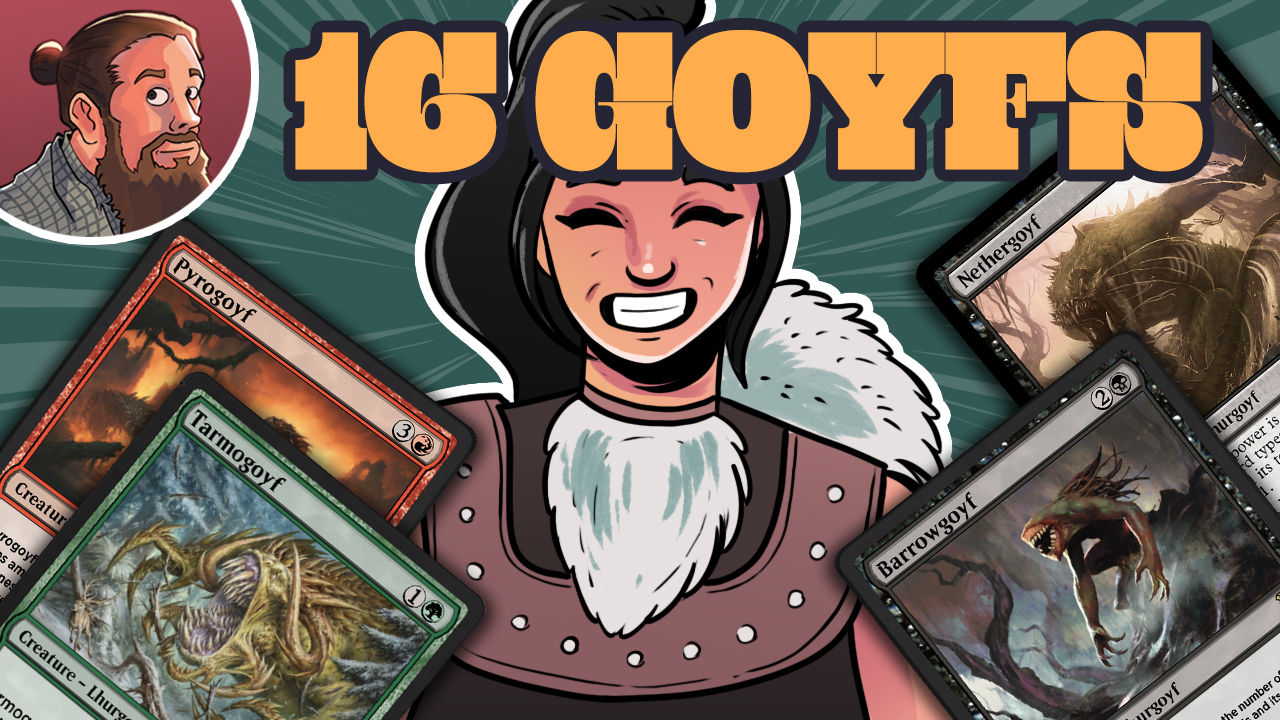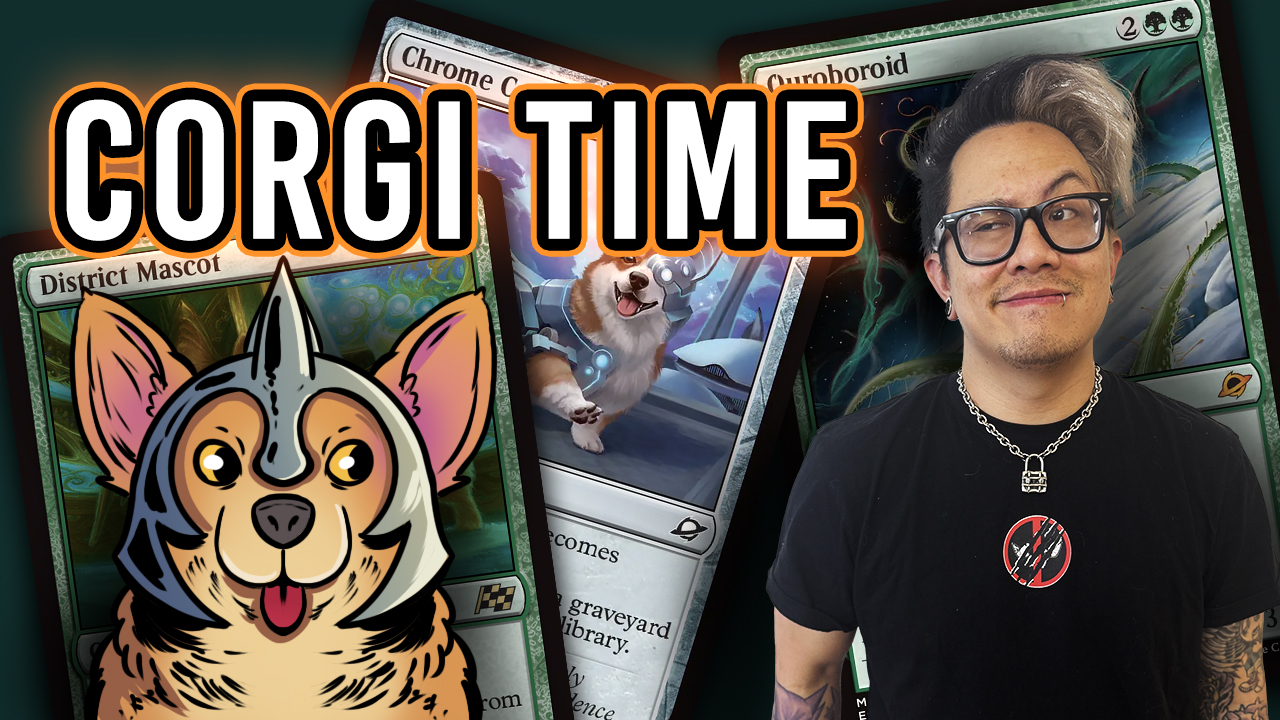The Aftermath of Amonkhet
A couple of weeks ago, we got our first (unofficial) peek at Amonkhet in the form of Dusk // Dawn, a card that looked different from any Magic card we'd seen before. As spoiler season progressed, we learned that a new split card mechanic—aftermath—is one of the primary mechanics from Amonkhet. So far, we've seen seven different rares with the mechanic, along with a handful of uncommons, and it seems likely that we'll see more during the next week of previews.
The problem is that, at least at first glance, nearly all of the aftermath cards seem extremely underpowered, to the point where it's hard to imagine them ever showing up in a constructed deck. With this in mind, it seems like a good idea to explore aftermath a little bit more. Can the mechanic (and cards) really be as bad as it looks on paper? What is the best way to evaluate this strange new mechanic? Today, we'll look at these questions (and more) as we talk everything aftermath. By the end, hopefully we'll have a better understanding of the mechanic, where it comes from, and its place in the game.
Aftermath = Flashback


A lot of different terms have been bandied around to describe aftermath, with "fuseback" being my favorite, since it captures both the split-card and "cast from the graveyard" elements of the cards, but most of these terms are not correct in terms of how the cards actually play. While aftermath looks like other split cards (think Fire // Ice or Breaking // Entering), they don't really play like split cards because you can't cast both halves of the card from your hand. Instead, as far as gameplay is concerned, aftermath cards are just flashback with wacky art and a bit of a twist: the card you cast from your graveyard isn't the same as the one you cast from hand. With this distinction in mind, thinking about aftermath as flashback is by far the easiest way to evaluate the cards.




The good news for the aftermath cards is that flashback is an extremely powerful mechanic, since it not only generates card advantage but also allows for some tricks to generate value only from the graveyard (a good example of this is Gnaw to the Bone in Dredge, which doesn't really plan on drawing and casting the card from its hand but instead just attempts to mill it into the graveyard and cast it with flashback). Just a quick glance at various formats will show the power of flashback. Past in Flames is a staple in both Modern and Legacy, Cabal Therapy is a Legacy all-star, Conflagrate has finished many a game for Modern Dredge, Ancient Grudge is a sideboard staple, and the list goes on, including Lingering Souls, Roar of the Wurm, Dread Return, Unburial Rites, Desperate Ravings, Deep Analysis, and Faithless Looting. In fact, while I don't have scientific data, just looking at the impact of flashback, I wouldn't be surprise to find that it is one of the most constructed-playable mechanics ever printed.

While it might seem like a vote of confidence for aftermath that it is based on one of the most playable mechanics of all time, even discounting the actual text printed on the card (which we'll talk about in a few minutes), the very design of aftermath makes it less powerful than flashback. The reason for this is that aftermath adds a lot of variance into your deck building. Take a card like Faithless Looting. If you're playing a deck that wants to draw two and discard two, having access to this effect a second time from the graveyard will definitely fit the plan and theme of your deck. Basically, with flashback, even though you can only play four copies of Faithless Looting, you have access to eight copies.

Aftermath suffers from some staggering inconsistency. Take Dusk // Dawn, for example. Let's say you're playing a deck that wants to use it as a pseudo-wrath to destroy all creatures with power three or greater (which is a real possibility in Standard, considering we don't have hard-wraths at four mana anymore). Technically, the upside of Dusk // Dawn is that you can "flash back" the Dawn half of the card to return small creatures from your graveyard to your hand. The problem is that if you are playing UW Control, you likely aren't playing any (or at least many) creatures that Dawn can return. While some percentage of decks might want both halves of the card, it's likely an equally great percentage that will just want a wrath, and Dawn doesn't actually provide any real value (while just having Dusk with Dusk flashback would be great). As weird as it sounds, being two different cards actually makes the aftermath cards significantly less playable than flashback cards, which have the same effect twice.
Evaluating Flashback / Aftermath
Because aftermath cards look so different from normal Magic cards and do offer natural card advantage by being two cards in one, they are harder to evaluate than a typical Magic card. Here again, flashback can provide a guide to evaluating the power of the cards. If we look back at flashback cards, you'll see that the ones that are playable in constructed fall into two main groups. First, some see play because their front half is costed so efficiently that the flashback is just upside (this includes cards like Faithless Looting, Ancient Grudge, and Chainer's Edict). Second, some flashback cards see play primarily because of their flashback cost. Examples here include Unburial Rites, Deep Analysis, and Roar of the Wurm. While the front halves of these cards are fine, the reward for flashing them back is great enough that they see play despite their front halves (although this sometimes requires a specific deck or synergy, like Madness for Roar of the Wurm or Gifts Ungiven for Unburial Rites). Basically, for a flashback card to be playable, the front half either has to be close to on-par for its effect, so the flashback aspect of the card is a bonus / afterthought, or the reward for getting the card in the graveyard is good enough that you don't mind building around a card that's not that great in your hand. So, what aftermath cards fit these criteria?
Front-Half Value


Out of the nine aftermath cards we've seen so far, only two have front-half effects that are even close to being constructed playable on their own. Cut from Cut // Ribbons isn't a great removal spell, but it could be main-deckable in the right metagame. We've seen Roast see play in the not-too-distant past, and it looks like there will be a lot of four-toughness creatures in Amonkhet Standard. The problem is that, in most decks, Harnessed Lightning kills four-toughness creatures at instant speed, and in black decks, Grasp of Darkness and even Fatal Push offer the same power, so it will take a pretty specific build (a deck that doesn't care about energy, doesn't want a Lightning Axe package, and isn't playing black) for a deck to really want Cut // Ribbons over the other available options.
Meanwhile, Dusk // Dawn is the only aftermath card that has an effect that is rare on its front half (and arguably on both halves, but more on this in a minute). Retribution of the Meek was a rare and Austere Command (while way more flexible but more expensive) was a rare, so paying four mana to destroy all creatures with power three or greater seems fairly reasonable. Of course, this will depend on the metagame. Wraths just aren't good against Vehicles, and Dusk // Dawn doesn't really help against Four-Color Copy Cat either, so unless Amonkhet (or bannings) brings about significant changes to the metagame, Dusk // Dawn might have to wait a while to have a chance to shine.
Back-Half Value
One thing that aftermath in general has going for it is that our current Standard has a ton of discard outlets and Amonkhet itself has a discard theme, so it's possible that Wizards' intentions for these cards isn't so much for players to cast them from their hands but instead to discard them for value and then flash them back. Here's a short list of potentially playable cards that allow you to discard aftermath cards for value:
| Color | Cards |
| Red | Nahiri's Wrath, Bomat Courier, Collective Defiance, Furyblade Vampire, Ravenous Bloodseeker, Cathartic Reunion, Lightning Axe, Tormenting Voice. |
| Black | Call the Bloodline, Collective Brutality, Cryptbreaker, Haunted Dead, Stromkirk Captain. |
| Blue | Oath of Jace, Advanced Stitchwing, Geralf's Masterpiece, Wharf Infiltrator. |
| White | Peace of Mind. |
| Green | Noose Constrictor. |
| Colorless | Geier Reach Sanitarium, Key to the City. |
As you can see, while red, black, and blue have the most discard outlets, in theory, you can make a discard theme work in just about any color thanks to colorless options like Key to the City and Geier Reach Sanitarium. The question is, just how much value can you get by discarding aftermath cards? Here again, there are only a couple of options that stick out as potentially playable.


For some reason, we keep coming back to the same two cards. The Dawn half of Dusk // Dawn has the potential to be powerful in the right build (likely one containing a bunch of little creatures). While Dusk // Dawn is not as powerful because the creatures return to hand rather than the battlefield, we've seen cards like Return to the Ranks and Rally the Ancestors be very strong in the right deck. Meanwhile, Ribbons from Cut // Ribbons is scary in the same way Conflagrate is scary in Modern. While it costs a ton of mana, knowing your opponent is just a mana source or two away from killing you with a huge drain effect is stressful and changes the way you play the game, so simply the threat of being killed by Ribbons might be enough to make the card semi-playable.
The other consideration here is just how much value you are getting from discarding the card and whether a deck cares enough about discarding to play cards whose primary purpose is to be discarded for value. Also, the aftermath cards are competing with madness to some extent, which further eliminates some potential. For example, I could imagine wanting to discard Insult // Injury to Lightning Axe with the goal being to kill two creatures for four mana. The problem is that Fiery Temper is simply better than Insult // Injury in most decks and allows for the same play with just two mana.
Finally, none of the backsides of the aftermath cards we've seen so far really impact the board in a significant way. Yes, you can technically get a removal spell from Insult // Injury or Prepare // Fight, but we haven't seen Roar of the Wurm- or Unburial Rites-type aftermath cards that could spawn an archetype. Here again, if you are looking to generate value by discarding stuff, you're almost certainly going to be better off discarding Voldaren Pariah, Prized Amalgam, or Haunted Dead, which makes it difficult to see a realistic role for aftermath in constructed. While something could come along during the rest of spoiler season, we have a fairly large sample size of aftermath cards at this point, and their "hit" rate is incredibly low, so it seems unwise to expect much.
Why Does Aftermath Feel So Bad?
The community response to aftermath has been quite negative, and while it's possible this changes as people start to play with the cards, it's worth taking a minute to understand why. First, Wizards went out of their way to redesign Magic cards for this mechanic, which creates the expectation that at least some of the cards with the mechanic will be playable. I mean, "Why would Wizards go through so much work for nothing?" is a fair question, and we don't really have a good answer.




More importantly, you'll notice a trend if we look back at flashback and other split cards: to make the cards fair, Wizards tends to increase their mana cost or ever so slightly decrease the effect of the card. For instance, you pay an extra mana for the Beck half of Beck // Call compared to Glimpse of Nature, the Breaking half of Breaking // Entering mills two fewer cards than Glimpse the Unthinkable, the Burn half of Turn // Burn is one mana more than a Shock, Tumble of Rough // Tumble is worse than Pyroclasm, and so forth. With flashback, cards like Increasing Ambition and Fires of Undeath are one(ish) more mana than you would pay for the effect without flashback. Basically, you have to give up a little something to gain the card advantage and / or flexibility of the mechanic. However, if you look back on flashback and split cards, you'll notice that nearly all of them are at the same rarity as the "normal" version of the effect. While there are a handful of exceptions, for the most part, a rare effect without flashback (or being on a split card) is a rare effect with flashback (or on a split card), an uncommon effect is still uncommon, and so forth.
While this might not sound important, it's actually very important from a psychological perspective. Opening a card that has traditionally been a rare but also has the upside of flashback or being a split card feels good. In fact, it feels better than opening a normal rare. Opening a charm that combines a handful of different common / uncommon abilities at uncommon is exciting and fun. The long history of rarities in Magic creates expectations. This is why you'll see huge Reddit posts and endless social media discussion about rarity changes every time a new set comes out. Generally, most people seem to be okay with effects moving down in rarity (especially in various Masters sets) because it makes the set more powerful. On the other hand, seeing effects go from common to uncommon (like Doom Blade) is much more controversial, and while almost unheard of, having effects go from common to rare feels horrible because players end up thinking, "Only a few sets ago, I opened this card as a common, and now it's eating up the rare slot where I'm supposed to get an exciting / powerful / playable card?"
This psychological feel-bad sums up the biggest problem with the aftermath cards: they simply aren't exciting because nearly all of them feel like commons that you'll open in your rare slot. While enfranchised / spike-y players might step back and say, "These cards may be better than they look because flashback is powerful," to most of the Magic community, opening a Prepare // Fight will feel miserable because they already have a stack of Moment of Heroisms and Hunt the Weaks from Duels Decks or Welcome Decks. It would be one thing if this were simply a problem with one or two of the aftermath cards—there has always been and will always be bad Magic cards. However, if we look at the origins of all of the aftermath cards we've seen so far, you'll see this isn't a "there are always bad cards" thing—the entire aftermath mechanic is built around printing commons at rare.
Aftermath Origins



This is a fun one. Prepare // Fight is a mashup of the common Moment of Heroism and a strictly worse version of a common currently legal in Standard: Hunt the Weak. I could be a bit more forgiving with the aftermath cards if they were really old commons that newer Magic players didn't have or didn't know about, but a common that is currently in Standard?



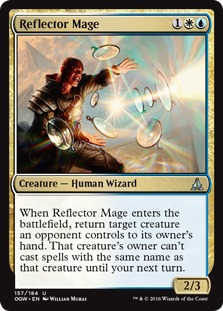
Failure // Comply is actually one of the hardest aftermath cards for which to find good comparisons. The front half looks a bit like the uncommon Unsubstantiate but is strictly worse, since it doesn't actually hit creatures once they are on the battlefield. (I would like to think that Unsubstantiate for only spells would be common because it's very much worse than multiple uncommons.) Meanwhile, Comply is also unique, but it certainly isn't rare, considering that Silence costs the same amount of mana and keeps an opponent from casting anything for a turn, while Comply requires you to "guess the right card" for it to have any effect—and even if you guess right, it only stops one card. Someone suggested that together the card feels like Reflector Mage, and I guess that makes sense. You can cast Failure to bounce a spell and then Comply naming the spell, and your opponent can't cast it on their next turn, but Reflector Mage (an uncommon itself upgraded from common thanks to the "can't cast" clause) comes along with a very blinkable and close to on-curve body, which makes it much, much better than Failure // Comply.



Cut // Ribbons is pretty simple. The front half is a Flame Slash that costs an additional mana, while the back half is an Exsanguinate that doesn't gain you any life. Basically, it's a strictly worse common combined with a strictly worse uncommon.


We only need one comparison for Rags // Riches: the in-Standard uncommon Rising Miasma (which hasn't seen a bit of play). The front half's effects are exactly the same, and flashing back the Riches part of Rags // Riches will likely have about the same effect as casting a Rising Miasma with awaken. Of course, there's some variance involved. You could end up stealing something good for seven mana if, for some reason, your opponent plays their bomb into your on-board trick, but most smart opponents will make sure to have a couple of bad creatures around for Riches fodder, which likely makes the average value not much greater than the 3/3 land you get from Rising Miasma.
One other note: I know that Riches looks a little bit like Blatant Thievery (a Commander staple), but giving your opponent the choice makes it much more similar to Evangelize (a card you've probably never seen before, for very good reason: it's horrible). Always getting your opponent's worst creature is immeasurably worse than always getting your opponent's best permanent. While it's possible people will try Rags // Riches in Commander, I expect that they will often be disappointed.




Mouth // Feed is quite literally a 3/3 for three on the front side, which makes is very much like a long list of green cards, including Nessian Courser and Centaur Courser, and while these cards are usually reasonable commons in limited, they never really make an impact on constructed. Meanwhile, Feed is a bit more challenging to break down. The closest thing I could find is Inspiring Call, which is a bit more restrictive, but you could argue that it's more like a Shamanic Revelation with downside.



The Insult half of Insult // Injury is another hard card to compare. Doubling all of our damage permanently is a rare effect, and Quest for Pure Flame (maybe the closest comparison) takes a lot of work to set up, so I guess that Insult may indeed be a rare (or at least an abnormally strong uncommon). Meanwhile, Injury is a strictly worse version of a very old common named Lunge, which has the exact same effect as Injury but at instant speed.



We won't go in depth on Dusk // Dawn because we've already spent quite a while talking about it, but this is the one aftermath card that legitimately feels like two rares stapled together (the fact that this was the first aftermath card we saw might have further raised expectations—not that Dusk // Dawn is great, but it feels on par with similar flashback and split cards in terms of rarity and mana cost).
Wrap-Up
For those of you keeping score at home, by my count, only one aftermath card is a combination of rare plus rare (Dusk // Dawn). In fact, you could argue that Dusk // Dawn is the only aftermath card where either half qualifies as a rare (although as we talked about a minute ago, there's a decent argument that Insult of Insult // Injury is rare). Not being all rare effects is fine. We've seen rares before that are a combination of common and uncommon abilities that are very strong. The problem with the aftermath cycle is that the most common pairing of effects is low-tier uncommon plus common, and in some cases (Prepare // Fight), common plus common.
Taken as a whole, I'm having a hard time understanding the aftermath cards from Amonkhet. One of the great things about Magic (and of Wizards' set design) is that not all cards have to be for everyone, and Wizards generally does a good job of making some cards for Spikes, some cards for Vorthoses, some cards for Commander players, some for kitchen-table casuals, and so forth. As such, there are sometimes great cards that one group or another doesn't like, and that's fine—they aren't the audience for that card.


However, when it comes to aftermath, no one likes the cards. The ones we've seen so far aren't good enough for spikes to care about and look even worse after things like Dromoka's Command and Ojutai's Command that were recently in Standard. They don't especially help casual players or new players because they are mostly combinations of easy-to-access commons and uncommons and aren't really fun designs. Many are difficult to play in Commander because they are multi-colored and their effects simply aren't big or flashy enough for the format, and even the Vorthos / flavor / design people I know generally dislike them before of their ample border and very small art.
The aftermath cards are just strange all around, and it's extremely puzzling why Wizards would choose to do something as bold as create an entire new card design only to waste it on a unplayable and underpowered mechanic.
Conclusion
Anyway, that's all for today. So, what am I missing here? Who are the aftermath cards designed for? Why do they exist? Are we going to find that they are much better than they look once we start playing with them? Are any of them significantly better than I'm giving them credit for? Most importantly, do you like the aftermath cards, their design, their abilities, or their flavor? Make sure to let me know in the comments, and you can reach me on Twitter @SaffronOlive or at SaffronOlive@MTGGoldfish.com.


